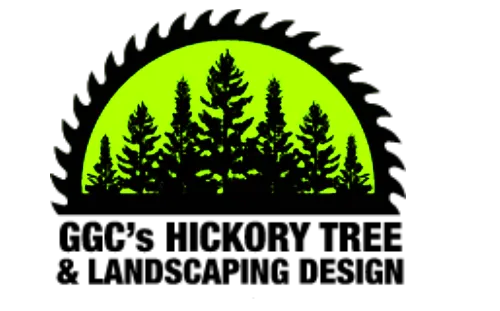Best In Town
GGC,s Hickory Tree is a family-owned Tree Service and Landscape Design Company caring for natural landscapes for over 30 years of communities in and around Sullivan and Orange County NY.
It doesn’t matter if it’s a massive tree in your yard that’s about to fall and needs to be removed, or your backyard is overgrown and needs a major overhaul and landscape design. We’ve got you covered.
If you’re looking for a reliable company that truly enjoys what we do, look no further and give GGC,s Hickory Tree & landscaping design a call today.
We promise that we are the tree company you want to hire if you want the best in the Orange and Sullivan County NY. area. We truly care about our work and want to make sure the job is done the right way the first time.



Your Paragraph text goes Lorem ipsum dolor sit amet, consectetur adipisicing elit. Autem dolore, alias, numquam enim ab voluptate id quam harum ducimus cupiditate similique quisquam et deserunt, recusandae. Here Your Paragraph text!
What Is ?
We provide exceptional tree services to meet all your arboricultural needs. Tree service encompasses a range of specialized care and maintenance tasks that ensure the health, safety, and aesthetic appeal of your trees and surrounding landscape. Our dedicated team of trained professionals offers a comprehensive array of services, including tree trimming, pruning, removal, stump grinding, and more. Whether you require routine maintenance to enhance tree health or emergency tree removal, our expertise and commitment to excellence ensure top-quality results. With our unparalleled knowledge, cutting-edge equipment, and eco-friendly practices, we strive to exceed your expectations and deliver outstanding tree service solutions tailored to your specific requirements. Trust us to handle all your tree care needs with precision, professionalism, and a deep respect for the natural beauty and importance of trees in your outdoor environment.
Recent



Recent



Specializes In:
Tree Removal
Tree Trimming and Pruning
Landscaping design
FAQ's
Frequently Asked Questions About
Q: Why is tree pruning important?
A: Tree pruning is important for several reasons. It helps promote tree health by removing dead, diseased, or damaged branches. Pruning also improves the tree's structure, aesthetics, and overall growth. By eliminating crowded or crossing branches, it reduces the risk of branch failure and potential hazards. Additionally, proper pruning techniques can enhance sunlight penetration and airflow, which are vital for optimal tree growth and preventing fungal diseases..
Q: When is the best time to prune trees?
A: The best time to prune trees can vary depending on the species and the goals of pruning. Generally, for most tree species, late winter or early spring, before the new growth emerges, is a suitable time for pruning. However, there are exceptions. For flowering trees, it's often best to prune immediately after they have finished blooming. It's always recommended to consult with a professional arborist to determine the ideal pruning time for your specific trees.
Q: What are the signs that a tree needs to be pruned?
A: There are several signs that indicate a tree may need pruning. These include dead or broken branches, excessive crossing or rubbing branches, dense foliage blocking sunlight, or branches interfering with utility lines or structures. If you notice any of these signs or have concerns about the health or safety of your trees, it's advisable to consult with a tree care professional to assess the situation and recommend appropriate pruning measures.
Q: What are the benefits of hiring a professional tree service?
A: Hiring a professional tree service offers numerous benefits. Firstly, professionals have the expertise and knowledge to assess tree health, identify potential issues, and determine the best pruning techniques for optimal results. They also have the necessary equipment and skills to perform pruning safely and efficiently, reducing the risk of accidents or damage. Professional tree services can save you time and effort, ensuring that the job is done correctly and enhancing the long-term health and aesthetics of your trees.
Q: Can tree pruning be done at any time of the year?
A: While some light pruning, such as removing dead or broken branches, can be done throughout the year, major pruning is typically best done during specific seasons. As mentioned earlier, late winter or early spring is often the ideal time for major pruning, as the tree is dormant and has not yet begun active growth. However, it's important to consult with a professional to determine the appropriate timing based on your specific tree species, local climate, and pruning objectives.
Q: Is tree pruning a DIY job, or should I hire a professional?
A: While minor pruning tasks like removing small branches or deadwood can be done by homeowners, significant pruning or pruning near power lines and structures should be left to professionals. Tree pruning can be dangerous, requiring proper training, knowledge of pruning techniques, and specialized equipment. Professional tree services have the experience, expertise, and insurance coverage necessary to safely and effectively perform tree pruning, ensuring the health and longevity of your trees while minimizing risks.
Q: Why should a tree be removed?
A: A tree may need to be removed for various reasons. If a tree has structural instability, extensive disease or pest infestation, or is encroaching upon power lines or structures, removal becomes necessary to ensure safety and protect the surrounding environment. Additionally, when planning landscape renovations or dealing with invasive species, removing a tree is essential. Safety concerns, such as dead branches or severe decay, further emphasize the need for tree removal. Consulting with a professional tree service ensures an accurate assessment and responsible removal, taking into account the tree's condition and potential impacts.
Contact Us
Service Hours
Social Media
Specializes In:
Tree Removal
Tree Trimming and Pruning
Landscaping design
FAQ's FAQ's
Frequently Asked Questions
About [Keyword]
Q: Why is tree pruning important?
A: Tree pruning is important for several reasons. It helps promote tree health by removing dead, diseased, or damaged branches. Pruning also improves the tree's structure, aesthetics, and overall growth. By eliminating crowded or crossing branches, it reduces the risk of branch failure and potential hazards. Additionally, proper pruning techniques can enhance sunlight penetration and airflow, which are vital for optimal tree growth and preventing fungal diseases..
Q: When is the best time to prune trees?
A: The best time to prune trees can vary depending on the species and the goals of pruning. Generally, for most tree species, late winter or early spring, before the new growth emerges, is a suitable time for pruning. However, there are exceptions. For flowering trees, it's often best to prune immediately after they have finished blooming. It's always recommended to consult with a professional arborist to determine the ideal pruning time for your specific trees.
Q: What are the signs that a tree needs to be pruned?
A: There are several signs that indicate a tree may need pruning. These include dead or broken branches, excessive crossing or rubbing branches, dense foliage blocking sunlight, or branches interfering with utility lines or structures. If you notice any of these signs or have concerns about the health or safety of your trees, it's advisable to consult with a tree care professional to assess the situation and recommend appropriate pruning measures.
Q: What are the benefits of hiring a professional tree service?
A: Hiring a professional tree service offers numerous benefits. Firstly, professionals have the expertise and knowledge to assess tree health, identify potential issues, and determine the best pruning techniques for optimal results. They also have the necessary equipment and skills to perform pruning safely and efficiently, reducing the risk of accidents or damage. Professional tree services can save you time and effort, ensuring that the job is done correctly and enhancing the long-term health and aesthetics of your trees.
Q: Can tree pruning be done at any time of the year?
A: While some light pruning, such as removing dead or broken branches, can be done throughout the year, major pruning is typically best done during specific seasons. As mentioned earlier, late winter or early spring is often the ideal time for major pruning, as the tree is dormant and has not yet begun active growth. However, it's important to consult with a professional to determine the appropriate timing based on your specific tree species, local climate, and pruning objective
Q: Is tree pruning a DIY job, or should I hire a professional?
A: While minor pruning tasks like removing small branches or deadwood can be done by homeowners, significant pruning or pruning near power lines and structures should be left to professionals. Tree pruning can be dangerous, requiring proper training, knowledge of pruning techniques, and specialized equipment. Professional tree services have the experience, expertise, and insurance coverage necessary to safely and effectively perform tree pruning, ensuring the health and longevity of your trees while minimizing risks.
Q: Why should a tree be removed?
A: A tree may need to be removed for various reasons. If a tree has structural instability, extensive disease or pest infestation, or is encroaching upon power lines or structures, removal becomes necessary to ensure safety and protect the surrounding environment. Additionally, when planning landscape renovations or dealing with invasive species, removing a tree is essential. Safety concerns, such as dead branches or severe decay, further emphasize the need for tree removal. Consulting with a professional tree service ensures an accurate assessment and responsible removal, taking into account the tree's condition and potential impacts.







